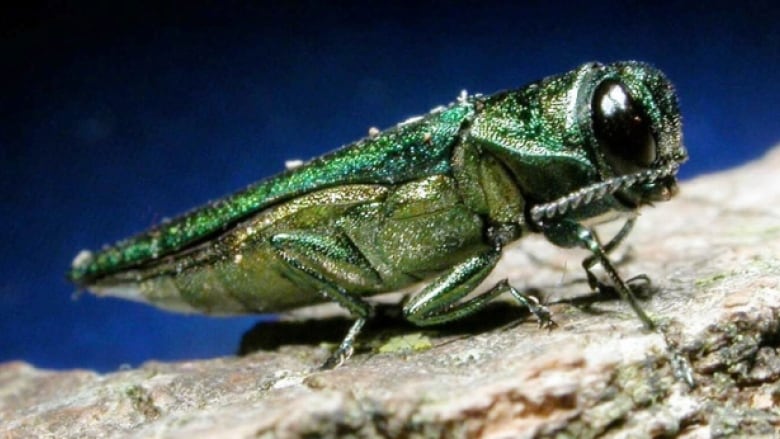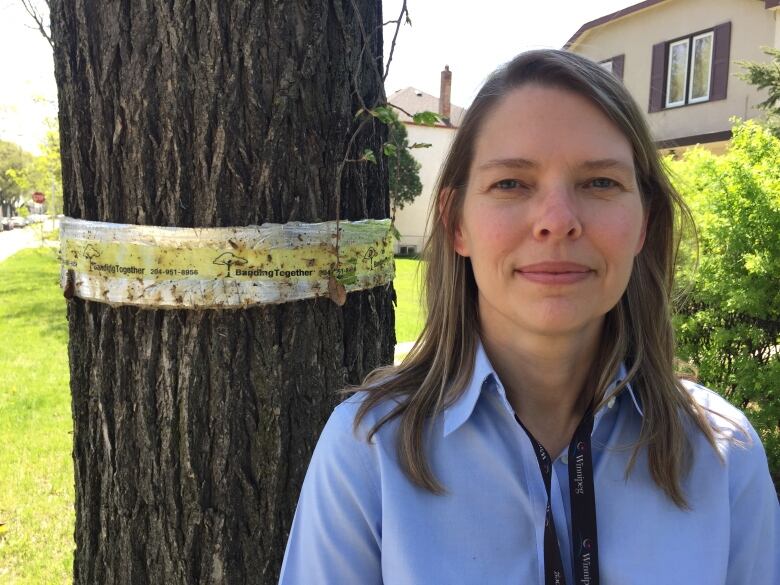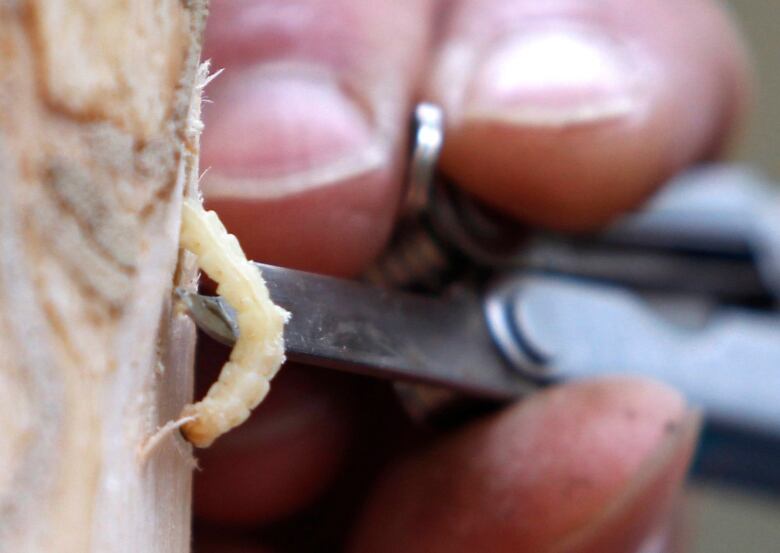Forester alarmed after Emerald ash borer beetle found in Thunder Bay
'It could be here already. We just haven't detected it yet,' forester says of looming invasion

The city's resident forester says she was alarmed to hear an invasive beetle species that devastates urban tree populations has arrived in northwestern Ontario, less than 600 kilometres east of Winnipeg.
Late last week, theCanadian Food Inspection Agency (CFIA) confirmedemerald ash borer beetleshadbeen spotted in Thunder Bay.
Once the iridescent beetles make their way into trees and lay eggs,it's next to impossible to get rid of them.
Last year, the beetles were found in Duluth, Minnesota, which is even closer to the Manitobaborder.

Some cities have spent millions fightinginvasions, while others have lost thousands of ash trees.
- Emerald ash borer report to go before council
- In the last year, Hamilton lost nearly 10,000 trees to the emerald ash borer
- Scientists try to fight off emerald ash borer using fungus traps
The bug is knocking at Manitoba's door and experts say it's only a matter of time before it breaches Manitoba's borders.
"It will go after every ash species and it will also go after healthy trees and even small trees," she said. "Small trees, large trees, everything that we have. It doesn't matter whether it's healthy or in poor condition. It will go after it."
Barwinskysaid Winnipeg, like Thunder Bay, is vulnerable to the beetle because neither cities have much tree diversity, which means invasive species and infections can spread more easily.Thirty percent of all trees in Winnipegare ash, which is the second most common species after elm.
Themap below illustrates a random sampling of 2,000 green ash trees, the second most common tree in Winnipeg.
Ash has been widely planted across the city over the years, but some areas are home to particularly abundant populations, and they're subsequently the most at risk of experiencing a mass die off should the borer beetle have its way.
'It could be here already'
The city startedan ash tree inventory this spring and officials have been bracing for an invasion for a while now.
"It could be here already. We just haven't detected it yet," Barwinsky said.
"I know back in 2007, we started preparing for it, and we anticipated back then it would take about five years for it to get here. Thankfully it's not here,we don't believe it's here yet. So it's really difficult to determine or guess how long it takes to get here."

Barwinskysaid people who frequentlytravel or have cabins in northwestern Ontario should not bring firewood back into Manitoba becauseit could have beetles stowed away beneath the bark.
"The most common means of the beetle moving is through human activity, so whether it has moved on a piece of firewood, or it's moved from packing material or nursery stock, or any kind of ash material, that is the most common way the beetle has spread,"Barwinskysaid.
The CFIA has already restricted the removal of ash trees and firewood from Thunder Bay and is investigating the extent of the invasion.
Trees that do get infected aren't always easy to pick out in a lineup,Barwinskysaid. They often show a general decline in health, which makes it harder to see the signs early on.
Officials with the citywant anyone who suspects their ash trees may have emerald ash borers to call 311.
What is the most common tree in your neighbourhood?
Hover over the map below to find out:
With files from Susan Magas and Jacques Marcoux












_(720p).jpg)


 OFFICIAL HD MUSIC VIDEO.jpg)
.jpg)



























































































